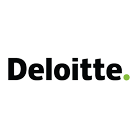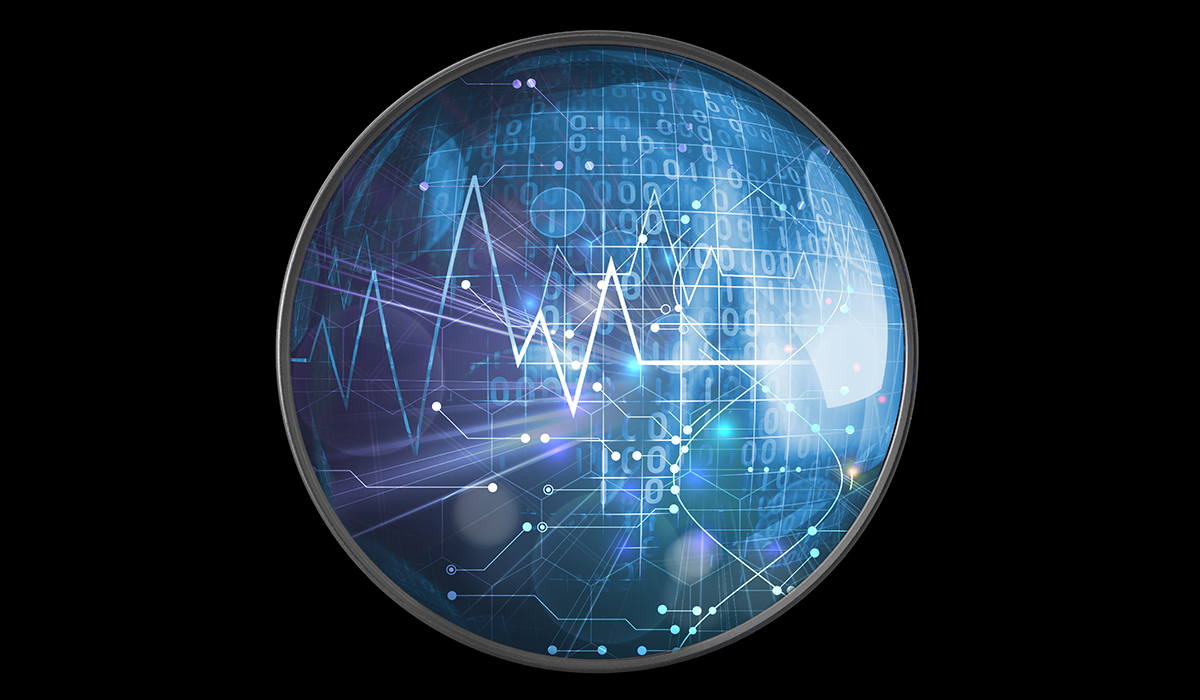ARTICLE SUMMARY:
Diagnostics companies have an opportunity to shape the future of healthcare delivery—if they take advantage of the consumerism trend that is transforming the industry. By Christopher Park, Principal at Deloitte Consulting LLP.

Deloitte Life Sciences
Comprehensive consulting, financial advisory, risk management, audit, tax and related capabilities, along with software products and platforms, deliver value at every step - from insight to strategy to action.
Like many families during the pandemic, mine became fluent in diagnostic testing options and practices in a way we never had before. We came to understand the differences between PCR and an antigen test and, after repeated attempts, became experts in nasal swabbing techniques.
As COVID waves came and went, the United States yo-yoed from an initial dearth of test supplies to a rapidly cyclical shortage/surplus market, with each wave bringing more awareness and testing options for consumers—and more demand planning pressures for the companies making the tests.Indeed, manufacturing of molecular tests jumped from 260 million in 2019 to 725 million in 2020, with COVID tests accounting for 470 million of the 725 million total. COVID test volume in 2020 was almost twice that of the entire molecular test volume from 2019.[1] While self- or at-home testing volumes have moderated of late, it’s clear that COVID rapidly accelerated consumer appreciation for testing and diagnostics, dramatically driving up demand and providing a new tool in the battle to understand and moderate COVID spread.
Amid changing demographics, rising cost pressures, and proliferating technologies, engaged and empowered patients are taking more ownership of health and wellness.They are gathering more health information from multiple sources, participating earlier and more actively in decision-making, and constructively questioning early diagnoses, treatments, and options. Consumers have access to more and better health and wellness data, and they are looking for ways to interpret and share that data.This acceleration of consumerism presents both opportunities and risks for diagnostics companies. Even as traditional medical/lab sales and distribution channels continue to evolve, growth strategies must change to address new consumer, retail, government, and other channels. Companies need to build new capabilities in consumer product development, sales, and marketing to understand, influence and, ultimately, grow from the demand for better health data and at-home testing. While it’s a legitimate approach to evaluate and then reject a consumer channel strategy for a diagnostics solution, companies can no longer assume that such channels no longer exist.
Diagnostics and testing are on the front line of prevention, diagnosis, and actionable treatment. More and more tests and tools are becoming available to help consumers diagnose various conditions, measure overall health, and identify genetic risks. And consumers are increasingly receptive to these offerings.According to our 2022 survey of US healthcare consumers and physicians, a growing number of people use wearables, apps, digital assistants, and smart devices to measure their fitness and health-improvement goals (49% in 2022 vs. 42% in 2018) and to monitor health issues (34% in 2022 vs. 27% in 2018) such as physical activity, weight, and blood pressure. Among people who use these devices, 78% say doing so has an impact on their behavior. In addition, 85% of consumers told us they are comfortable using diagnostic tests (e.g., a stool sample to identify bacteria in their gut or genetic tests to identify current or future health risks) to assess their health and health risks. And they are willing to use these devices to conduct tests at home or alternative care sites, like a retail clinic.
Consumers Know What They Want
Many of today’s consumers know what they want from a healthcare experience, and their preferences extend to diagnostic tools and tests. Most want an enhanced hybrid experience that combines digital (websites, smartphone/tablet apps, personal medical devices) and in-person care; that is, real-time responsiveness delivered with a human touch. As a result, we’re seeing an increasing demand for diagnostic technologies that are convenient, accessible, and affordable, and can provide actionable results quickly. Acknowledging this, some medtech companies are working to make diagnostic tests more convenient for patients. For example,Cologuard,which tests a stool sample to identify bacteria in a user’s gut, uses a hybrid personal/professional delivery model that combines a physician prescription for medical record integrity with the convenience of at-home self-collection. The availability of more at-home diagnostics could help eliminate some barriers to health equity as long as the products are affordable and accessible.
Retail and medical device companies are creating better healthcare diagnostic, management, and wellness tools for an aging population that wants convenient and affordable care at home. And technological advances like wearables are making it possible to continually monitor a person’s condition while also collecting real-world data in real-time. According to our survey, consumers are increasingly open to sharing their tracked app/device health information with their doctors, with a 39% increase since 2015. Nearly 50% of consumers are sharing their tracking information with apps that manage their health. A third of consumers are very/extremely willing to share their data with device developers to improve the device. As more patient data flows from medical devices, the diagnostics industry will need to define which information is clinically relevant, determine who owns the data, how it will be aggregated and used, and how privacy will be protected.[2]
Although consumer awareness and acceptance rates are up, diagnostics developers still have work to do to get more consumers to use their digital tools and keep them engaged throughout the patient journey. Involving and empowering consumers to help improve the diagnostics customer experience and reduce friction points could be a game-changer. For example, diagnostics industry leaders we spoke with emphasized the need to educate consumers on the availability of diagnostic technologies, particularly those that are non-invasive. This education, in turn, could help consumers make decisions in collaboration with their healthcare providers.
Diagnostics companies have an opportunity to shape the future of healthcare delivery—if they take advantage of the consumerism trend that is transforming the industry. Making diagnostics and testing more convenient, accessible, and affordable for consumers could be a better, faster, and less-costly method for shifting healthcare spending from late-treatment and chronic care to wellness, early detection, and prevention.
 Chris Park is a Medical Technology Principal in the Boston office. Chris joined Deloitte Consulting LLP in 1994 and has served clients in the life sciences, health care provider, manufacturing, higher education not-for-profit and retail industries. Chris serves as the global leader for DeloitteDx, a community of practice focused on advancing the business of diagnostics, testing and laboratory services. Chris founded and runs the Deloitte Covid Testing Coordination Center (TCC), an information exchange for the independent aggregation, analysis and dissemination of testing supply, demand and related issues as the global COVID pandemic evolves. He sponsors the weekly DeloitteDx Digest, a summary of key business events, issues and insights for companies in the Diagnostics/Testing/Lab sectors. He was a co-author of the 2020 National Testing Action Plan for K-12 (NTAP) and works regularly with the Rockefeller Foundation, private and public sector clients on issues related to COVID testing supply and demand.
Chris Park is a Medical Technology Principal in the Boston office. Chris joined Deloitte Consulting LLP in 1994 and has served clients in the life sciences, health care provider, manufacturing, higher education not-for-profit and retail industries. Chris serves as the global leader for DeloitteDx, a community of practice focused on advancing the business of diagnostics, testing and laboratory services. Chris founded and runs the Deloitte Covid Testing Coordination Center (TCC), an information exchange for the independent aggregation, analysis and dissemination of testing supply, demand and related issues as the global COVID pandemic evolves. He sponsors the weekly DeloitteDx Digest, a summary of key business events, issues and insights for companies in the Diagnostics/Testing/Lab sectors. He was a co-author of the 2020 National Testing Action Plan for K-12 (NTAP) and works regularly with the Rockefeller Foundation, private and public sector clients on issues related to COVID testing supply and demand.
[1] The Post-Pandemic Future of Diagnostics | Deloitte US, October 13, 2022.
About Deloitte
Deloitte refers to one or more of Deloitte Touche Tohmatsu Limited, a UK private company limited by guarantee (“DTTL”), its network of member firms, and their related entities. DTTL and each of its member firms are legally separate and independent entities. DTTL (also referred to as “Deloitte Global”) does not provide services to clients. In the United States, Deloitte refers to one or more of the US member firms of DTTL, their related entities that operate using the “Deloitte” name in the United States, and their respective affiliates. Certain services may not be available to attest clients under the rules and regulations of public accounting. Please see www.deloitte.com/about to learn more about our global network of member firms.
This publication contains general information only and Deloitte is not, by means of this publication, rendering accounting, business, financial, investment, legal, tax, or other professional advice or services. This publication is not a substitute for such professional advice or services, nor should it be used as a basis for any decision or action that may affect your business. Before making any decision or taking any action that may affect your business, you should consult a qualified professional adviser. Deloitte shall not be responsible for any loss sustained by any person who relies on this publication.
© 2023 Deloitte Development LLC. All rights reserved.
Comprehensive consulting, financial advisory, risk management, audit, tax and related capabilities, along with software products and platforms, deliver value at every step - from insight to strategy to action.
Learn more at Deloitte Life Sciences
